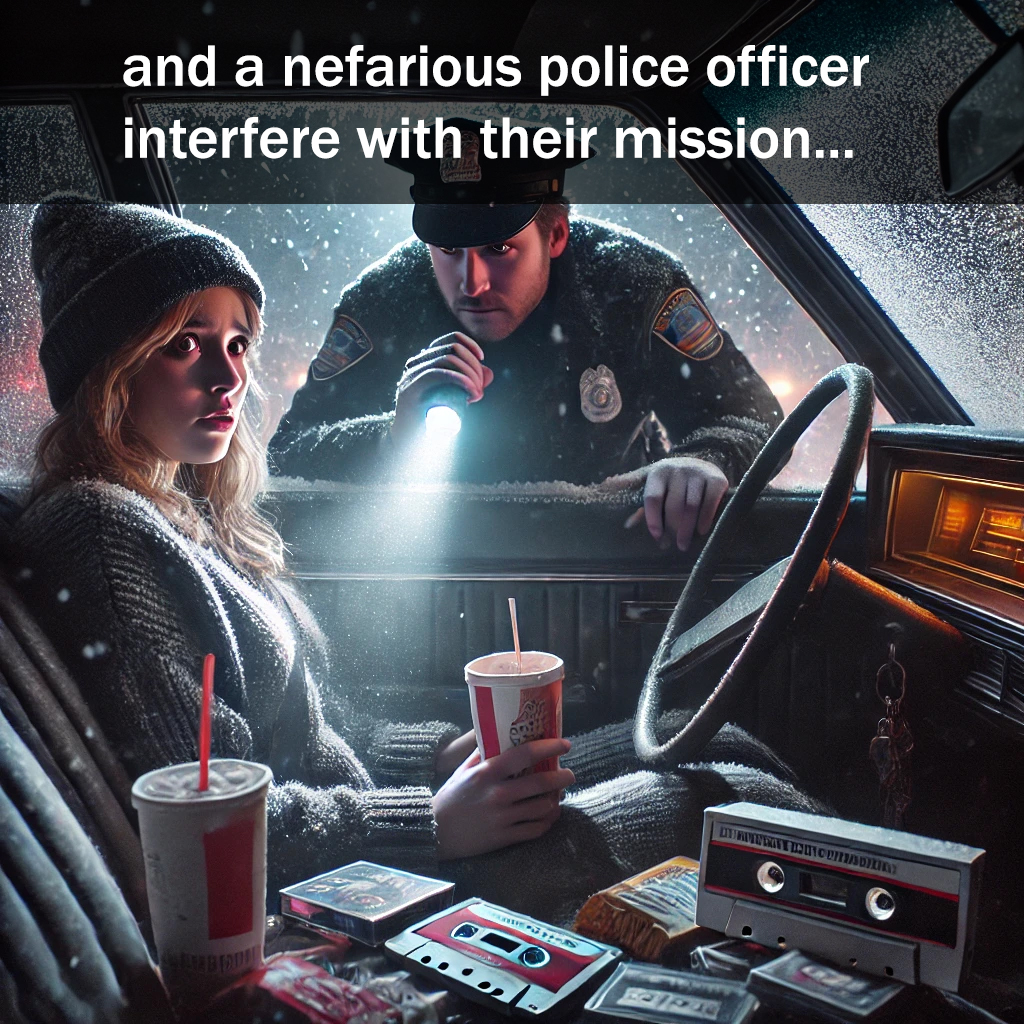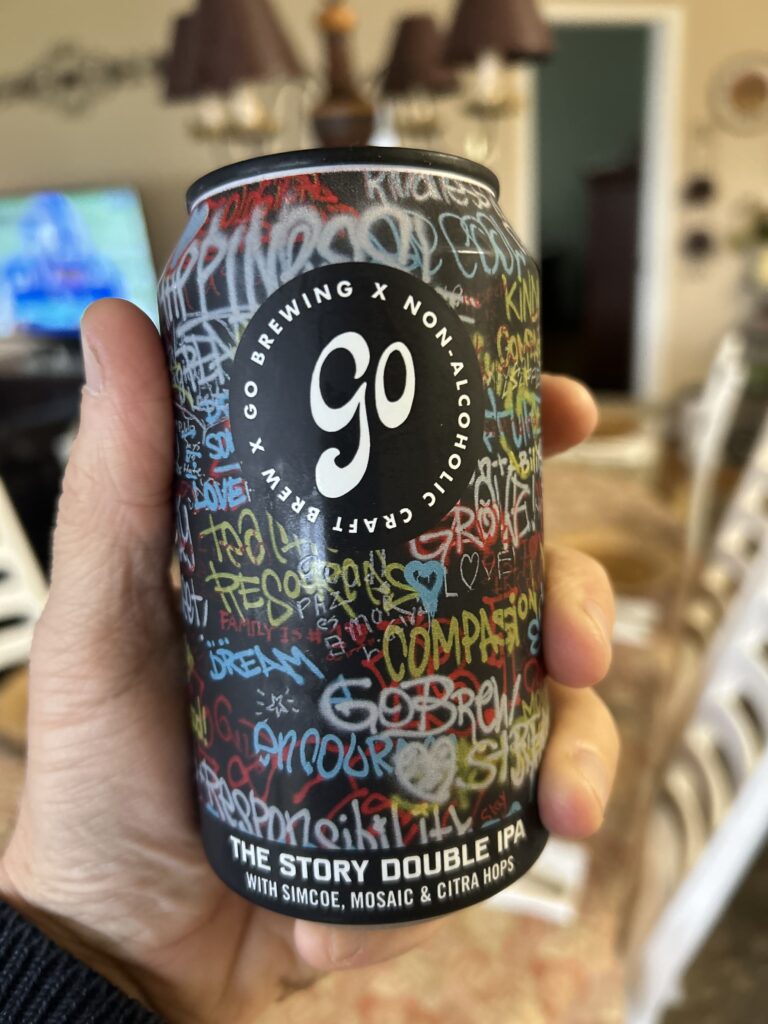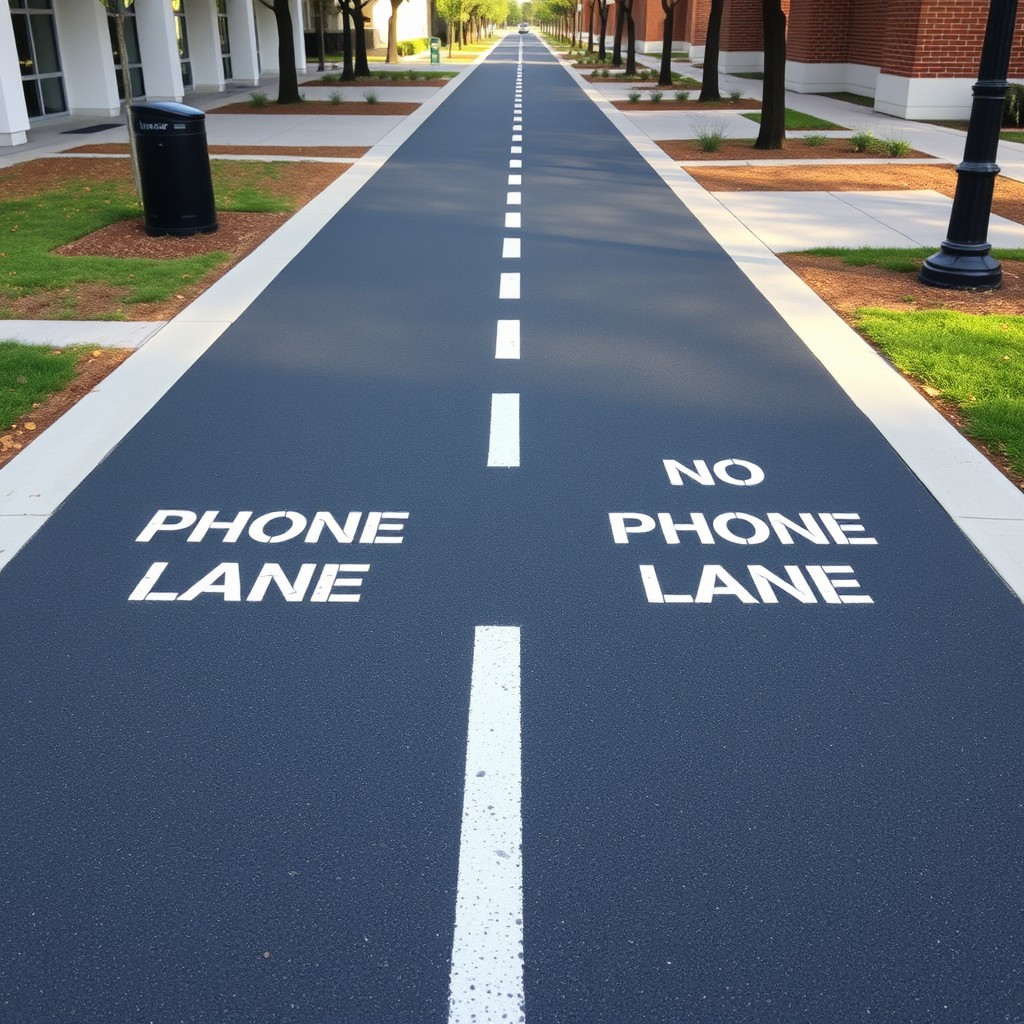You may never need to jump to a Google search result source again. With the current AI Assistant in place, most of your questions get answered and then some. Now with AI Mode, you can engage in follow-up questions and get everything you need answered all in one location within Google Search. I haven’t seen any ads / sponsorship sections of the AI Mode yet. For now, it’s a super clean experience without any clutter from various Google tools (like Maps, Reviews, Display Ads etc.) peppered into the experience.
The deep tissue massage ended and I was escorted to the spa’s Brine Room. If it wasn’t for the gift card, I wouldn’t have even been there. But there I was, sitting in a bath robe on an Adirondack chair, smelling like lavender oil.
I enjoyed the microscopic salt particles floating in the air, along with ambient drone music and the gentle light therapy. This halotherapy session was the grand finale, a place to get some peace with both body and mind.
Some in the room sipped on complimentary champagne or water, nibbling on cheese and fruit. It was a soothing end to the unknotting of bodies before they braced the harsh sunlight in the parking lot.

A guy sat next to me and whipped out his phone. Varying lights emitted from his phone as his thumb swiped on the glass. His wife sat next to him and did the same thing. The phone glow was distracting, but I closed my eyes and tried to relax, not wanting to snoop.
The locker rooms had signs reminding all to detach, to leave your phone locked up and silenced. I figured these people were dedicated employees, maybe entrepreneurs, and needed to check their emails. I’ve been there, and understood that sometimes it’s hard to mentally check out. I thought further: Maybe they had a family emergency and were trying get updates? Or maybe they were wealthy and this was just a typical Friday for them, the whole experience so dull and mundane that they needed to digitally escape. Maybe the Brine Room to them was the drab equivalent to me standing at the Glenside train station, waiting for the SEPTA regional train.
Chuckles ensued and I glanced over. The familiar thumbing ensued, both of them looking at their Instagram feeds, pausing at certain moments. The user interface and fixed icons at the bottom were clear to me. (But, why couldn’t they have been using Dark Mode?)
And that’s what I realized how it’s such an amazing, opportunistic time to be a social content creator. You’re tossing your vertical video content in the roulette wheel of potential viewers on Instagram and TikTok. You’re feeding the dopamine cravings of many throughout the day, whether it’s doomscrolling or joyscrolling—many are diving into a deep scroll hole and getting blissed out and blacking out on “For You” content.
As a content creator, you’re vying for everyone’s attention, hoping you’ve checked all the boxes for the ever-morphing algorithm that nobody fully understands. Everyone has a chance to cook up that viral video, following alleged recipes that make it tight like Walter White’s “blue” stuff.
Public social scrolling in supermarket lines is commonplace, but I’ve also seen it happening at funeral homes and at the theater during the first scene of an IMAX movie. Sure, I know people like to watch streaming shows at home and scroll on the couch arm, but a theater?
So, is there any place sacred where a phone can’t be these days?
I don’t think so.
From date nights at a table for two to the dreadful waiting in the dentist lobby, pregnant pauses of life yield scrolling like thistle weeds.
And this is another win for the social content creator—there’s no wrong place or environment to scroll in. The public are making that clear. It’s normal to see people scrolling as they walk through a busy intersection as they hope the white blinking walk light guides them safely across the street.
What is the strangest place you’ve seen someone scrolling, as they cannot bear to coexist without the augmentation of social or AI? Are public micro-scroll moments healthy? Are these “digital breathers” feeding a dopamine addition or are they just relaxing the mind, allowing escape from reality.

Typing (keyboarding) is the most important tech skill that I’ve learned. But is it taught in school anymore?
That 7th grade typing class I took enabled me to type with rapid precision without looking at keys. This seems trivial these days. I never put my average words-per-minute score on a resume to get a job. It was just assumed that you could belt out 70+ words with ease if you used a computer at all.
Without typing, I couldn’t have sustained any job that I’ve ever had, aside from being a caddie. The skill enabled me to quickly write term papers in college, newspaper articles, technical manuals, code in HTML and CSS, craft fiction, pound out countless emails, and, lately, serve up ChatGPT queries. Maybe I wouldn’t have had that first date with my wife if I hadn’t responded so quickly when online dating.
I saw my 7th grade typing teacher at a friend’s engagement party once. I gave her a big hug and thanked her, and probably frightened her a bit. But her class was the only one that provided a future-proof skill, well over Trigonometry.
But are kids being taught typing today? Do kids wonder why the QWERTY keyboard exists on their phones?
My 7th grade son has a school Chromebook but he isn’t taught how to type. He uses his own homegrown two finger method and somehow seems to be getting by. He seems fine texting on an iPhone or entering in Nintendo Switch codes. He can tap out a Wawa hoagie order on a touchscreen with ease. But does he know that you should use your left pinky to tap on the letter Z?
To navigate the digital world, typing seems absolutely essential.
Many students start typing on computers and cell phones before they are in school. Is it assumed they are proficient, and that speech-to-text dictation functionality is the future?
With typing not being a skill that’s tested on standardized tests, I can see why it would be removed from the equation. STEM based curriculum has an emphasis on coding and digital literacy, but wouldn’t typing better expedite these skills?
Is it assumed that typing is akin to walking, eating and personal hygiene, and that they should just learn it at home?
Is typing a part of your school district’s offerings?

I drive an 18-year-old car. There’s no AI functionality built into it, at least that I’ve discovered.
The high beams produce about 1,700 lumens per halogen bulb. Newer cars with LED bulbs produce about 3,500 lumens for their standard beams.
So, my high beams are actually dimmer than the standard beams of modern cars.
Driving through hilly suburbia at night makes this apparent. The yellowish tinge of the halogen bulbs is no match for the piercing bluish LED light and it’s many reflective glares.
If you have astigmatism, night driving is even more challenging. Halos, streaks and blurry vision come into play.
At times, it seems safer to wear my prescription sunglasses at night. Luckily, night driving glasses exist with amber tinted lenses that are designed to filter out the LED blue light.
For some, wearing geeky glasses is not enough. Soft Lights Foundation advocates for regulations on LED lights, with an emphasis on protecting potential health harms such as migraines, seizures, and neurological issues.
Even if you have a modern car, the oncoming headlights are getting too bright. It’s a battle of LED lights.
Adaptive Driving Beam (ADB) headlights seems like the answer, and were approved by the National Highway Traffic Safety Administration in 2022 in the U.S. (The EU approved them in 2006.) This AI technology uses sensors and cameras to adjust the shape and brightness of the headlight, improving road safety and comfort.
For certain cars manufactured since 2022, the ADB option is there. But what about my 18-year-old car? That’s where I need to adapt as well and buy a new vehicle.
My car’s high beams vs. new car standard beams are like 2010 AI vs. ChatGPT — one tries its best but struggles in the dark, the other sees everything, maybe a little too well.
As writers, we live in our imaginations, carefully crafting every detail of our story’s world and the people who inhabit it. But translating these vivid visions into something readers can immediately see is often a challenge—especially in the visually driven culture of Instagram. This is where DALL-E, a cutting-edge AI image generator, can be a game-changer.
Whether you’re introducing readers to the eerie vibe of a dystopian cityscape, the warmth of a quaint small-town diner, or the complex personalities of your characters, DALL-E empowers you to create images that capture the essence of your story. Let’s explore how this tool can be an asset, particularly for creating Instagram carousel posts that draw readers into your novel’s world.
Step 1: Fine-Tuning the Vision for Your Setting
Your story’s setting is more than just a backdrop—it’s a character in itself. To use DALL-E effectively, start by defining what makes your setting unique. For example:
- Is it hauntingly dystopian, with crumbling skyscrapers and neon lights flickering in the mist?
- Does it evoke the idyllic warmth of a sleepy winter town, with snow-laden rooftops and strings of lights twinkling in every window?
By being specific about the atmosphere, era, and details, you can guide DALL-E to generate images that align closely with your vision. Imagine a carousel post starting with a wide shot of your novel’s world, followed by close-ups of key locations where the story unfolds. Each image can be accompanied by a caption that teases a plot element or describes the mood.
Step 2: Breathing Life into Your Characters
DALL-E can help you visualize characters with stunning precision. Here’s how to bring them to life:
- Start with Personality Traits: Is your protagonist a brooding antihero with a shadowed face and piercing eyes? Or a quirky, vibrant artist whose colorful attire matches their exuberance?
- Define Physical Features: Input key traits like hair color, build, clothing style, and expressions. For example, Garvey from Blizzard 96 could be visualized as a scruffy college senior in a thrift-store jacket, his eyes reflecting both determination and uncertainty.
- Emphasize Themes: If your novel’s themes are dark and suspenseful, use moody lighting and shadowy backdrops to amplify the tone.
The beauty of Instagram carousels is their ability to showcase multiple facets of a character. You can use one image for their exterior appearance, another for their inner struggles, and perhaps a third for a moment of transformation in the story.
Step 3: Captivating Your Audience with Subtitles and Captions
Pairing your visuals with compelling text is key to engaging readers. Use subtitles to frame each slide:
- “A Blizzard’s Grip: The Hotel That Holds Them Hostage”
- “Garvey: The Reluctant Leader”
- “The Cop Who Brings the Storm Inside”
Each subtitle can hook the audience into the story while keeping the carousel cohesive. Use captions to deepen their understanding of the narrative, describing what’s happening or sharing a snippet of dialogue.
Step 4: Building Anticipation and Community
By sharing these images and insights into your creative process, you’re not just promoting your book—you’re inviting readers into your world. You can even encourage fan interaction:
- Ask them to guess plot twists based on the images.
- Hold polls to decide between alternative visuals.
- Share behind-the-scenes commentary on how the images came to life.
Why DALL-E and Instagram are the Perfect Pair
Instagram thrives on stunning visuals, and DALL-E allows you to deliver exactly that. Each image is a reflection of your creative intent, designed to spark curiosity and emotional connection. By combining this technology with Instagram’s carousel format, you can craft a multi-layered, immersive introduction to your novel that lingers in readers’ minds.
With Blizzard 96, I’ve used these tools to capture the stark beauty of a snow-buried hotel, the contrasting personalities of Garvey and Wyatt, and the sinister undercurrents of the blizzard-stricken town. Every post becomes a piece of the puzzle, urging readers to dive into the story and discover how it all fits together.
So, if you’re an author looking to bring your story’s visuals to life, give DALL-E a try and see how it transforms your marketing—and your connection with future readers.
What scenes or characters would you want to bring to life for your own story?
Here is an example of imagery created in DALL-E, utilizing the Dystopian prompt:








Never a big drinker, I enjoy ales socially and love supporting local breweries. The buzz after three 6.5% IPA draughts at a bar with friends is a golden moment peak. It’s been a mainstay session.
“Strong Beer / Strong Coffee” lived in my Instagram profile for years. Seasonal beers were irresistible unicorns to behold. Trips to Big Top Beverage led to lengthy stays in the aisles, examining the elaborate case and label designs. Liquor and wine meant nothing to me.
Beer was a social pillar for me since I first cracked open my first Milwaukee’s “Beast” in college. Recently, I wanted to explore what a long period of time would feel like, for my mind and body, with zero booze. I went on and off for a couple years. The longest I went without a sip was 6 months. Big whoop, I know. Here’s some observations:
Better Sleep
Sleep become more even-keeled, deeper, and uninterrupted. Even just 6 hours of sleeps did the trick.
When drunk, the reduced REM sleep and deep sleeps are unattainable. I’d often wake up at 3am and have to watch TV to fall back asleep, or just stare at the ceiling for hours. And then the next day, hungover, I’d be exhausted.
Tightened Stomach?
This was just a bonus, but belly fat reduced rather quickly. What changed? Well, with even a modest buzz, I’d engage in a midnight 4th meal of the day and then feel that I deserved a bacon, egg, and cheese sandwich from a heated lamp at Wawa the next day, just to take the edge of. Without this intake, and without the calories of double-IPAs, weight loss just happened.
Fitness Focused
I don’t go to a gym. Swaying free weights in the basement, doing planks and yoga in the family room, and biking around town are enough for me. But while drinking, the next day created those “off” sensations where you couldn’t do anything but watch streaming shows under a blanket. Without the booze, my fitness routine was always welcoming, unhindered.
Work Day Focus
Whether working from home or in the office, the focus throughout the day became better maintained. Any “brain fog” or dire 3pm crashes were no longer there. With sleep quality strengthened, work day attentiveness didn’t drag.
Money Savings
Cases of locally crafted IPAs are expensive. This was a monthly budget line item that I could remove. Whatever your liquor or beer choices are, you’ll save money without having to restock your supply. You’ll also never have to use Uber or Lyft and deal with having to retrieve your car from a vacant parking lot the following day.
Hobbies Accomplished
More attuned all day, I had more dedicated time for hobbies and projects that I was working on around the house. The passions in my life outside of marketing became easily reached and more was accomplished.
Energy & Emotions
The days-long hangover malaise and alcohol-induced mood disruption were not missed. They weren’t there to destroy my energy or alter my emotions. Having Gilbert Syndrome, my hangovers were often devastating.
If you Google the benefits that your organs experience from abstaining from alcohol, it’s nothing but good news. For brain health alone, decisions making is improved, anxiety is reduced, mood swings are lessened, cognitive function is improved. These all felt achieved. But are the enzymes level of my liver increased? No idea.
Face Time
The typical old man bags under my eyes are never going away, but the extended bags, combined with bloodshot blue eyes, were never present. My skin seemed to look a bit healthier as well, but maybe it’s just that gifted shea butter I received? Not sure.
Bar Scene
My initial concern was that I’d be given a hard time for being a teetotaler sipping on a virgin Moscow Mule. But, out and about, nobody cared. Most didn’t even ask what I was drinking. Whether I was out watching the Phillies, at an industry conference, or at my own 50th birthday party, nobody was concerned at what I was drinking or what level of drunkenness I was at. It’s all about being present and having fun together, which leads me to…
Necessary Good Times Elixir?
With so many “crazy nights” tagged over the years, I wondered if alcohol was a necessary component of socializing in a boisterous, crowded bar. Did I need it to be witty and fun? Absolutely not. And I never have issues talking with strangers filter-free, so that 7.8% ABV lubricant isn’t needed. I didn’t require 2 drinks just to calm down or loosen up.
NA Options
I’ve never dabbled with non-alcoholic beers aside from Heineken 0.0 and O’Doul’s Premium, both of which taste awful to me. Athletic Brewing Company, from Connecticut, which you’ll find in big box stores and more often at bars, has two IPAs that actually taste great. I realized that I missed the aromatic smattering of hops such as Citra, Simcoe and Chinook, and these beers allowed me to enjoy the taste and fragrance. My favorite NA beers are from Illinois-based Go Brewing, which boast bold, unique can design.
Local to the Philly area, there is a store in Ardmore, PA called Wallace Dry Goods that holds NA events, such as zero-proof cocktail workshops. They also sell glassware and gift sets, along with NA spirits, beer, cider and wine. This Hosting Essentials mix six-pack lets you try six different brands.
Shame Free
The awful shame of being hungover around my kids no longer existed. And the late night act of coffee and a cake based dessert at a restaurant to help “sober up”, in the hopes of driving home safely, was obviously no longer there either.


Most TikTok accounts that I follow are a source of comic relief, simplistic recipes, or music reviews. Although YouTube and LinkedIn have a wealth of career and leadership advice videos, there are many TikTok accounts with insider knowledge from different generations.
Here are six accounts that I’ve been tapping the fave button on often. What are some of your workplace centric favorites?
Chris Williams
@theclwill
Former Microsoft VP. Provides tips for all stages of careers, focused on leadership. He does a great job breaking down clinical jargon and exposing potential toxic environments.
Lowe Whaley – Your Virtual Work Bestie
@loewhaley
Conducts workshops on the power of personal branding, growing your online social presence, boundary setting, effective communication and work-life integration. Her videos portray a lot of video conference scenarios that are hysterical life lessons.
Tom Fell – Comedian and WFH desk jockey
@tomfellisheokay
Hilarious spirals into of what seems obtuse but is quite actual. His rants follow a series of posturing with smart observations which bubbles into funny climaxes.
Greg Landstaff – Career Coach
@greglangstaff
Provides tips on perfecting resumes, online presence, job search and current corporate trends.
Corporate Truth Teller – Mental Health Therapist / Expert
@nidhitewarilcsw
High Performer Coach
@elissalynn_
Helps high performers detach from work without losing their edge.

I walked into the dry cleaners. Nobody was around. I tapped the bell.
A woman emerged from the rear carousel conveyor. “Ahhh, don’t tell me,” she said. “Franke with an E, right?”
“Yes!” I smiled. “You’re good.”
It was the same woman that had been there the last several (probably six) times I had visited. And each time, she recalled my name.
We had a minor chat about sushi and floral Hawaiian shirts. I stood, amazed that she pegged me from afar with a quick glance. My sunglasses and Phillies cap seemed to disrupt her memory for just a micro moment. There were no reward cards to swipe, QR codes to scan or any other disruptive consumer tech — just time for an actual conversation and a large, pink receipt to pick up the clothes, a crinkly nostalgic method of remembrance.
Sure, she knew that I was arriving at some point during the week and likely had a list of people in mind, but I’m just one of many regular office dudes stopping in there to get their shirts cleaned.
This verbal personalization amplifies an employee to top-tier. If all goes well, the desire to leave a Google review grows and puts that person in the spotlight, on a pedestal, on the red carpet.
At restaurants, when the bartenders or waitstaff remember your name, it’s as if you’ve arrived at a new echelon of customer service. You’re beyond the barricade of dull greetings and weather chitchat. You’re in the know. The customer experience has entered a realm of new ease and familiarity. If your position is front facing like this, it’s a true skill to rattle off first names and remember preferred cocktails.
Conversely, if you don’t remember frequent return customers, it can be a put off. You don’t remember me and the 35% tip that I left two weeks ago? You don’t recall the long conversation we had about Victory Brewing Company?
When you’re seated and the waiter asks if it’s the first time you’ve ever dined there, and you were there a couple weeks ago chatting with him about your pets and recent trip to Brazil, it can be a cringeworthy experience. I never take it personally, but wonder, my God, I must have been such a drab, boring person that night.
Years ago when I lived next to North Third in Northern Liberties, some bartenders would see me enter and start pouring my usual. I had become a Norm, a local regular whose desire to chat with strangers made it simpler for all.
Whether you use mnemonic devices with alliteration (like Loud Little Lucia) or just have an outstanding memory, you can improve customer relations and promote positive associations with these potent skills of connection.
At the quaint coffee shop, I was the sole customer, waiting for my inessential cheese Danish and 16 oz. to-go. A beautiful place, with sprawling plants and rotating artwork on the walls, I chatted a bit with the baristas. But then, I reached for my phone and slowly sat to scan my work emails, seized by the bold unread inbox.
An older gentleman walked in and sneered at me in disgust. I nodded with brief eye contact, but I was caught up troubleshooting an issue. “Whatever,” I thought, feeling the urgency of screen staring was vindicated.
The man placed his order and hovered over me, stopping his final footstep with a slam. I glanced up and his face was contorted as if I was draped with bird droppings.
“You know what?” he asked.
“Here it comes…” I thought, locking the phone.
“I can’t stand this song,” he said.
The Motown hit “My Girl” had been blasted since he entered.
“When I was at camp as a kid…” he said. “The counselors blared this song every morning for two weeks straight to wake us up.”
“I hate it too. It’s just too saccharine. It’s overused in movies and commercials. And every wedding.”
“Yes, it is. I’ve been hating it for 55 years!” The man sat next to me and crinkled his newspaper. We exchanged further comments, clutching our devices.
Staring at my phone in public, especially while walking, is something that I’m trying reduce. I don’t aspire to be a cyborg. Grocery shopping with an Apple Vision Pro strapped on is not a goal.
There’s always a notification to tap into if you crave it. Lingering at a Home Depot line or at your kid’s bus stop are prime moments for great conversations, or just reclaiming a sliver of humanity.
At Oracle Park where the San Francisco Giants play, to help prevent distracted human collisions, they installed separate lanes in the concession areas for walking with and without phones. I thought it was a joke when I first saw it.
Temporary, experimental phone lanes were also developed in Washington D.C., Belgium, Germany and China.
All of this leads to whether nomophobia (anxiety about not having access to a mobile phone and phone services) grips many of us.
For every potentially mundane moment in life, we can season it with a digital serotonin spike and get displaced from our physical surroundings. Are we ditching traditional social manners for the sake of addicted convenience? Are we preferring to be antisocial “offline”, choosing devices over humans?
As I devoured the enormous empty caloric baked good, I realized that portion control of screen (and food) is difficult to regulate for adults and kids alike.

The original ad that I saw in TikTok for the iOS app, Captions, was about how it’s an AI influencer tool. Yes, you could use it like that. But the simplest way to describe this app is that it’s like choosing a character with a fixed background to read your script. Of course, it won’t provide you with the thousands of followers that a real influencer has achieved.
I took the free trial version of Captions for a spin.
The character’s enunciation and phrasing can be tweaked a bit with punctuation, but it’s still rather locked into the persona’s sample style. You’re not going to make the characters cry, break a sweat, get a wardrobe change, pull back their hair or get into a giggle fit.
For certain characters, the lips and mouth movements weren’t matching the words, like a 70s Kung Fu film.
As with the app name, Captions creates beautiful captions, giving specific words more emphasis and providing many animation styles that are downright hypnotic and provide an easy read. Branded font colors available? Yep, you can do that.
You can also supply several photos for the character to appear in front of. The character can appear at various sized scales, which makes for a more exciting watch.
Here’s an example. (Of course, I had this character promote one of my books.):
@genxdada Blizzard 96 is a funny yet suspenseful college buddy novel packed with 90s nostalgia. Set in Berks County, Pennsylvania. #kutztown #kutztownuniversity #fictionalcharacters #novelasmexicanas ♬ original sound – Carl Franke
Here’s another example:
@genxdada Check out “Blizzard 96” for your next summer read. It’s a suspenseful story that’s packed with 90s nostalgia. #summerreading #fictionalcharacters #kutztown #bookstore #booktok ♬ Jacob and the Stone (Slowed) – Emile Mosseri & sped up + slowed
Also, here’s an example where I do a joke interview:
@genxdada AI influencer discussion. #ai #socialmediamarketing #iosapps #videomarketing ♬ original sound – Carl Franke